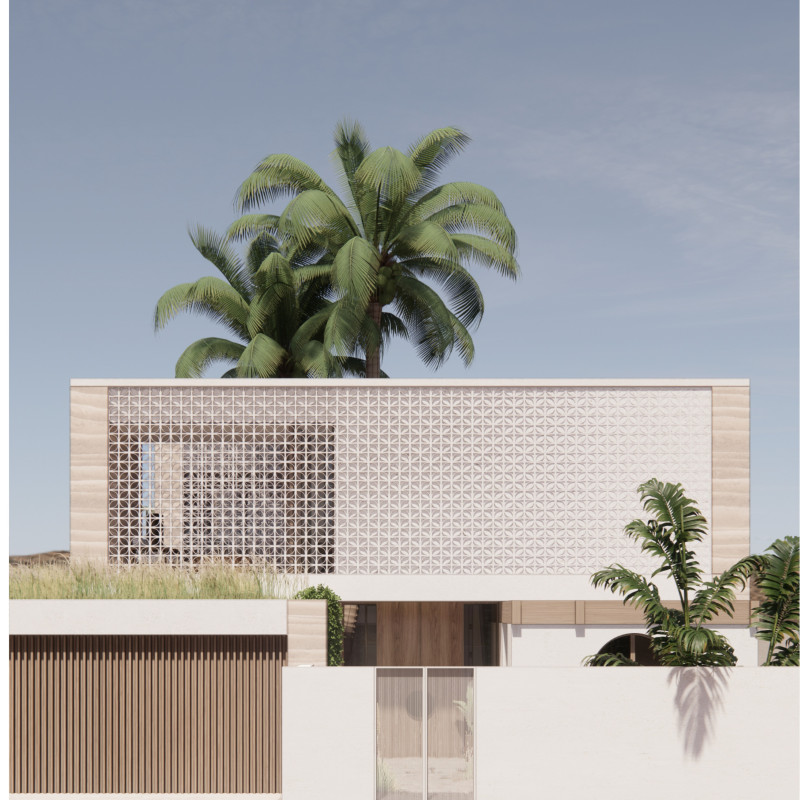5 key facts about this project
From an architectural perspective, the project’s function is multifaceted, catering to various activities and experiences. The layout is crafted to facilitate movement and interaction, balancing private and communal spaces effectively. The distinct areas within the design are strategically positioned to address the intended use, providing versatility while maintaining a coherent flow throughout the site. Each space is purposefully defined, allowing occupants to engage with the environment in meaningful ways.
Key elements of the design include a well-considered façade that captures the essence of the surrounding architecture while introducing modern materials and techniques. The materiality of the project plays a critical role, as selected materials are not only visually appealing but also serve practical purposes. The integration of durable cladding materials such as concrete and glass enhances the building's longevity and energy efficiency, while also providing a modern touch that aligns with current architectural trends. The use of sustainable materials reflects a growing awareness of environmental responsibilities, making the project relevant in today’s dialogue about sustainable architecture.
Inside, the project showcases a range of finishes and features that emphasize comfort and functionality. Well-placed windows allow natural light to flood the interiors, reducing reliance on artificial lighting and promoting an overall sense of well-being. The design emphasizes an open floor plan in communal areas, which encourages interaction and collaboration among users. Conversely, quieter zones are designed with sound insulation in mind, providing spaces for concentration and reflection.
Moreover, unique design approaches include integrating greenery into the architecture, blurring the boundaries between indoor and outdoor environments. The use of landscaping not only enhances aesthetic appeal but also contributes to biodiversity, creating an ecosystem that supports various forms of life. This connection to nature is becoming increasingly essential in architectural design, as it fosters a sense of place and belonging for users.
Attention to detail is paramount in this project. Custom features and carefully selected finishes provide a sense of uniqueness that distinguishes the design from standard solutions. Architectural elements such as bespoke fixtures, thoughtfully designed furniture, and curated artworks contribute to the overall narrative. These details reflect the project's commitment to creating spaces that are not only functional but also resonate on a deeper emotional level with those who experience them.
The project embraces innovative building technologies that promote energy efficiency and sustainability. Incorporating renewable energy sources and smart design choices positions it as a forward-thinking solution to contemporary architectural challenges. Aspects such as rainwater harvesting systems and solar panels exemplify a commitment to reducing the building’s ecological footprint while enhancing its operational efficiency.
This exploration of design encapsulates the essence of what architecture can achieve, merging practical functionality with thoughtful aesthetic considerations. The project stands as a testament to the potential of well-conceived design to enrich lives and foster community connections. It invites viewers to appreciate the nuances of its forms and spaces, encouraging an exploration of its architectural plans, sections, and ideas for a deeper understanding of its design language and intentions.
For those interested in gaining a comprehensive view of the project, it is encouraged to delve into the architectural presentation, where more detailed information about its innovative design elements and functionalities can be discovered. Exploring these resources will provide valuable insights into how the architecture of this project interacts with its environment, enhancing both its usability and appeal.


























